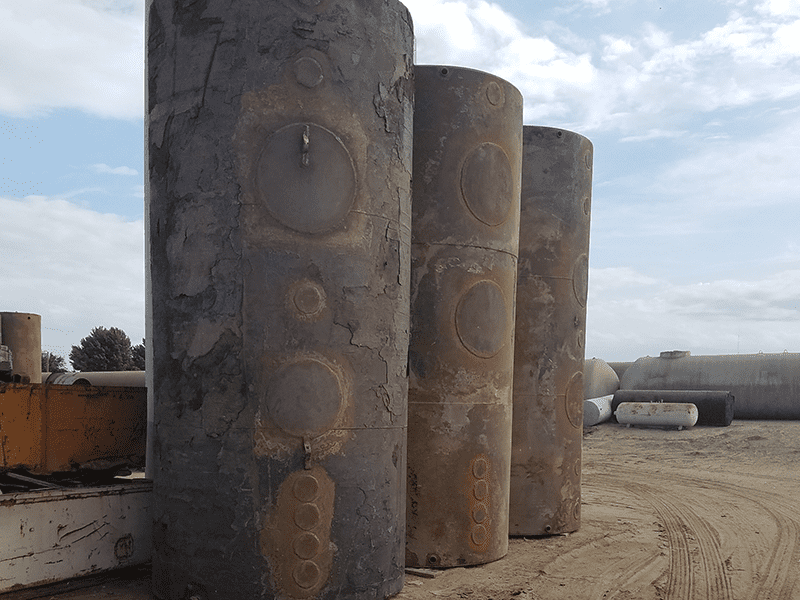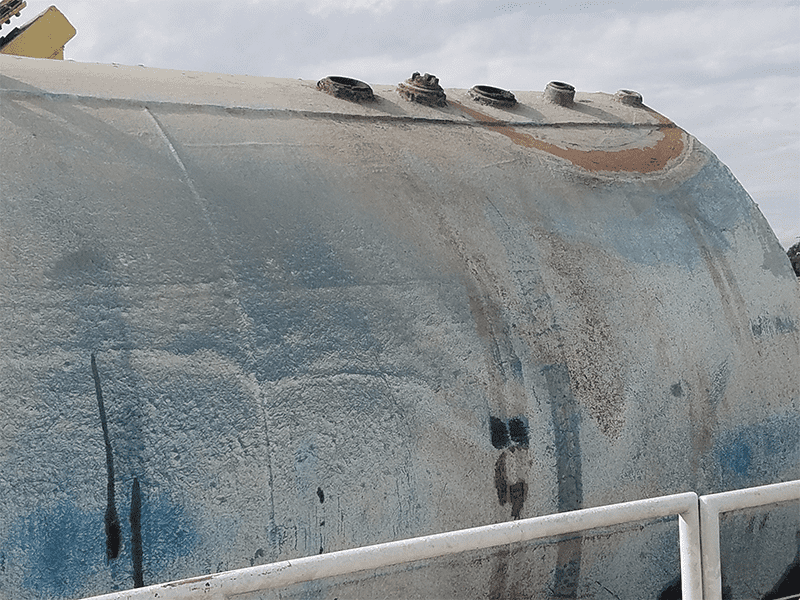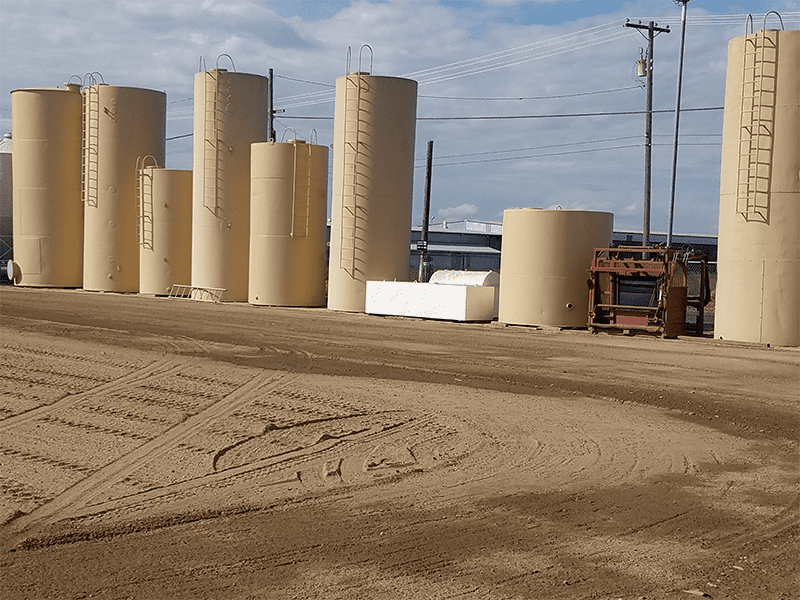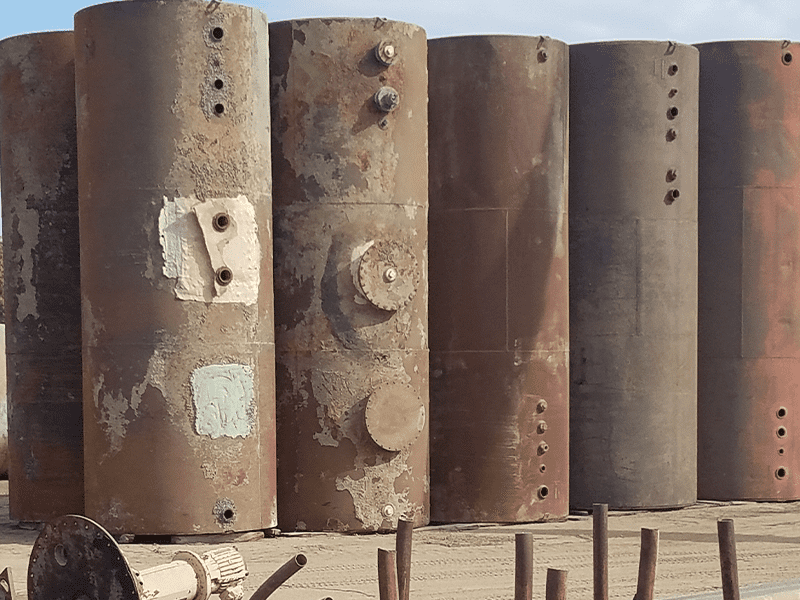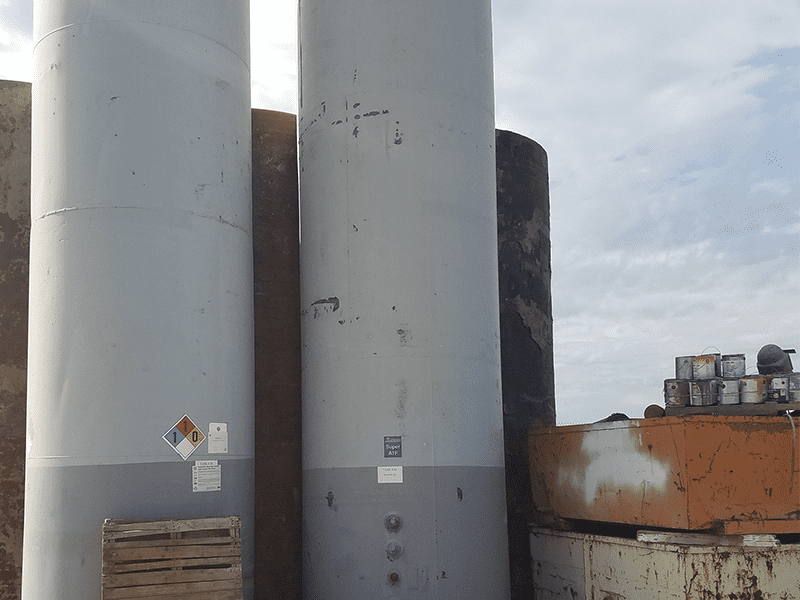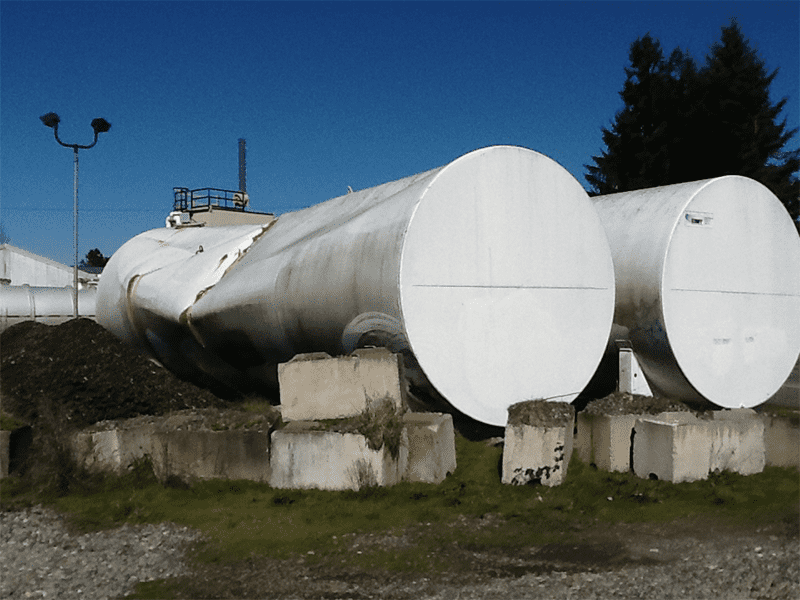Buyers beware of ASTs disguised as USTs
A California-based client recently asked CGRS Senior Engineer Bo Bowman, P.E., to evaluate the condition of used storage tanks the client intended to use to replace a failed aboveground storage tank (AST) that held diesel. The client was considering buying from a tank farm in the state’s Central Valley.
What Bowman found was approximately 100 underground storage tanks (USTs) repurposed and made to appear as if they were valid ASTs: the business had welded metal patches as lids over the ports; installed vents (though not necessarily functional); and painted the tanks to hide seams, patches and labels that would give away the tanks’ true identities.
Bowman strongly cautioned the client against buying those tanks, preventing the client from wasting money on a tank which they would need to replace – again – once regulating authorities reviewed tank documentation, and preventing a potential disaster if the tanks failed due to improper use.
A growing trend
With new tanks costing upwards of $50,000 to $70,000 – a 25% increase since the pandemic began – and supply chain issues delaying delivery for six to nine months compared with three months pre-pandemic, many fuel-facility owners/operators are leaning toward buying used tanks to store their fuel aboveground.
“They’re looking for better options,” Bowman said. “It’s a great option to take a tank that’s been somewhere else and repurpose it. It saves a lot of money. What people need to be concerned about is if they’re getting a tank built to the proper standards for storing combustible or flammable materials in an aboveground application.”
And some sellers – like the one described above – are accepting expired USTs that have been pulled and going to extreme measures to camouflage that fact, making it a “buyers-beware” market.
Call a CGRS Expert:
800.288.2657

Bo Bowman, P.E.
Senior Engineer
Mobile: 720.653.0213
USTs versus ASTs: what’s the difference?
- USTs are built to withstand the inward pressure of the over-abundant soil, so they won’t buckle under the pressure; in fact, USTs are built with less restraints for outward hoop pressures, since the soil actually reinforces USTs structurally. ASTs require improved weld seams to hold in the fluids, which would include using full penetration seam welds versus lap welds seams used in USTs.
- USTs are not required to have integrated emergency vents, since placement of the fuel underground greatly limits the chance for fire and restricts explosive forces to below ground. ASTs require emergency vents to release built-up pressure from fires and prevent explosions or vertical liftoffs.
- ASTs lack the reinforcement to support the tank heads; USTs use this reinforcement to stiffen the heads to resist soil loads.
Regulatory restrictions
Putting it simply, UST’s design structure is not compatible with use as an AST for fuels, and ASTs are not built to withstand underground burial intended for USTs. Using the wrong tank to store a combustible or flammable substance can result in harm to the environment, at the very least, and a danger to life and limb, at the worst.
Occupational Safety and Health Administration (OSHA) has specific standards for storing flammable or combustible materials above ground, and they don’t provide for repurposing USTs as ASTs or ASTs as USTs to hold combustible or flammable substances.
Several other standard-setting organizations also reinforce the dangers of doing so.
“UL (Underwriters Laboratories) does not list underground storage tanks for use in above ground fuel storage applications, or any retrofit kits for such an application,” according to The Code Authority newsletter. “There are significant safety concerns to consider … that could lead to catastrophic failures.”
The National Fire Protection Association (NFPA) Standard 30, Section 21.3.4, supports that conclusion.
“The design, construction, and installation standards of USTs are different than ASTs,” it states. “Since the core structure of the USTs is designed for an underground placement, it is difficult, dangerous and costly to convert USTs for aboveground placement. … Tanks which are not listed by industry standards or approved by fire code officials, specifically for aboveground flammable or combustible liquid storage, pose a significant danger and safety threat to owners, operators and others working around these tanks.”
Avoiding bad tanks
Bowman said it’s not illegal to sell USTs as ASTs or vice versa, but regulatory authorities such as the Environmental Protection Agency (EPA), the Colorado Division of Oil and Public Safety (OPS), the California Unified Program Agency (CUPA), and even local fire marshals may not be familiar enough with design standards to readily identify misused tanks. This is why regulatory agencies require tank manufacturers to apply proper nameplates identifying the tanks’ intended use.
The best way to determine whether someone is trying to sell a tank that for a purpose other than what it’s made for is to have an expert perform a SP001 inspection before it’s purchased and installed, he said. Those specifically trained to perform SP001 inspections know what red flags to look for that even fire marshals won’t see in repurposed tanks to determine whether they are suitable to store combustible or flammable materials.
CGRS’ team of expert tank inspectors can ensure you don’t purchase the wrong tanks to store petroleum and other combustible or flammable materials. Call 800.288.2867 to schedule an inspection today.

